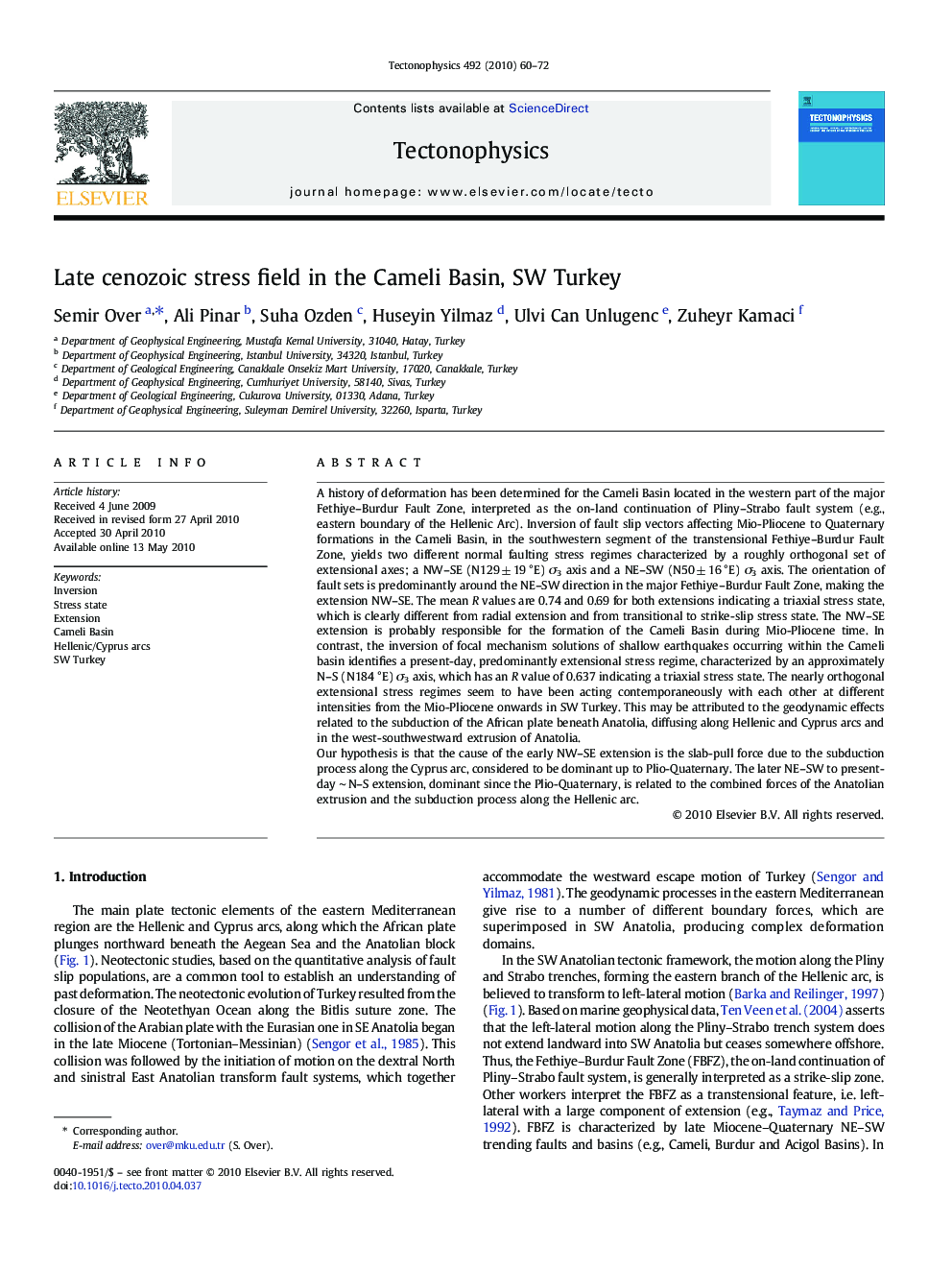| کد مقاله | کد نشریه | سال انتشار | مقاله انگلیسی | نسخه تمام متن |
|---|---|---|---|---|
| 4693309 | 1636862 | 2010 | 13 صفحه PDF | دانلود رایگان |

A history of deformation has been determined for the Cameli Basin located in the western part of the major Fethiye–Burdur Fault Zone, interpreted as the on-land continuation of Pliny–Strabo fault system (e.g., eastern boundary of the Hellenic Arc). Inversion of fault slip vectors affecting Mio-Pliocene to Quaternary formations in the Cameli Basin, in the southwestern segment of the transtensional Fethiye–Burdur Fault Zone, yields two different normal faulting stress regimes characterized by a roughly orthogonal set of extensional axes; a NW–SE (N129 ± 19 °E) σ3 axis and a NE–SW (N50 ± 16 °E) σ3 axis. The orientation of fault sets is predominantly around the NE–SW direction in the major Fethiye–Burdur Fault Zone, making the extension NW–SE. The mean R values are 0.74 and 0.69 for both extensions indicating a triaxial stress state, which is clearly different from radial extension and from transitional to strike-slip stress state. The NW–SE extension is probably responsible for the formation of the Cameli Basin during Mio-Pliocene time. In contrast, the inversion of focal mechanism solutions of shallow earthquakes occurring within the Cameli basin identifies a present-day, predominantly extensional stress regime, characterized by an approximately N–S (N184 °E) σ3 axis, which has an R value of 0.637 indicating a triaxial stress state. The nearly orthogonal extensional stress regimes seem to have been acting contemporaneously with each other at different intensities from the Mio-Pliocene onwards in SW Turkey. This may be attributed to the geodynamic effects related to the subduction of the African plate beneath Anatolia, diffusing along Hellenic and Cyprus arcs and in the west-southwestward extrusion of Anatolia.Our hypothesis is that the cause of the early NW–SE extension is the slab-pull force due to the subduction process along the Cyprus arc, considered to be dominant up to Plio-Quaternary. The later NE–SW to present-day ∼ N–S extension, dominant since the Plio-Quaternary, is related to the combined forces of the Anatolian extrusion and the subduction process along the Hellenic arc.
Journal: Tectonophysics - Volume 492, Issues 1–4, 20 September 2010, Pages 60–72